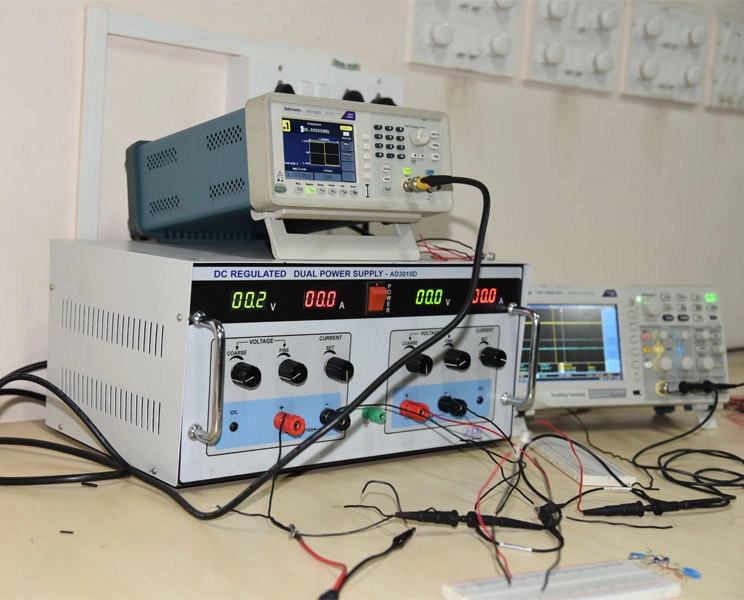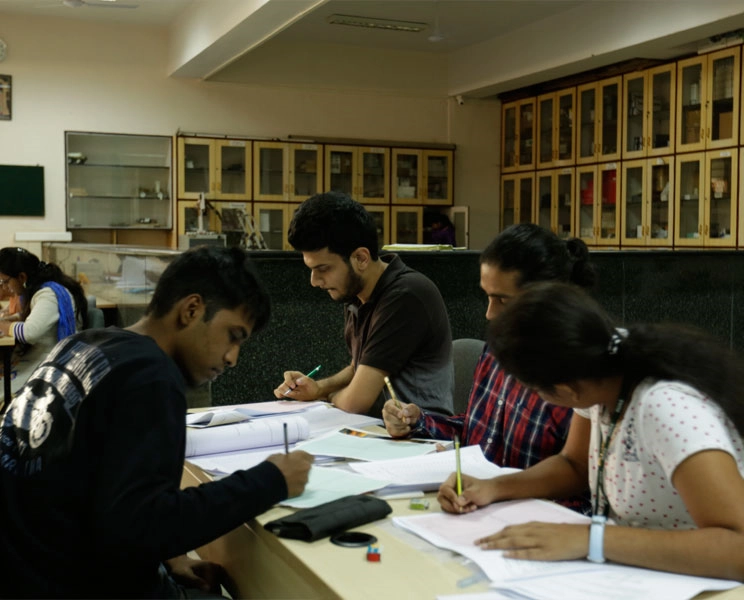Basic Electronics Lab
Basic electronics comprises the minimal “electronics components” that make up a part of everyday electronics equipment. These electronic components include resistors, transistors, capacitors, diodes, inductors and transformers.
Powered by a battery, they are designed to work under certain physics laws and principles. Students are taught about the practical applications of electronic devices, the working principles behind them, and their characteristics. They gain a deeper understanding of the subject by conducting experiments on diode-based rectifiers, clipping/clamping circuits, transistors, Op-Amp circuits, and logic gates.


Laboratory Facilities
| S.No | Name of the Equipment’s | Specifications |
|---|---|---|
| 1 | Desktop Computers | I5-4670S, 4GB RAM, Intel Core, 500GB Hard Disk |
| 2 | Software | NI Multisim Software |
| 3 | Digital Storage Oscilloscopes | 70MHZ ‚2 Channel |
| 4 | Arbitrary Function Generators | 20MHZ, 250MS/s |
| 5 | DC Regulated Power Supplies | 0 – 15V/5A, 2 Channel |
| 6 | Digital IC Trainer Kits | 16 Pin Sockets with Clock Pulse |
| 7 | Digital Multimeters | Digital Meter |
| 8 | Transformers | 9 – 0-9/1A |
| 9 | Discrete Components | Resistors(1 ohms-4.7M ohms) Capacitors(0.01uf-2700pf) Potentiometers(470 Ohms-470 K Ohms) Diodes(1N4001,1N4007) Transistors(CL100,BC547,BC557,BC107,SK100), Zener Diodes(1N4148,2.6V-12V) OP-Amps(UA741,LM324) Logic Gates(7400,7402,7404,7408,7432,7486) |
